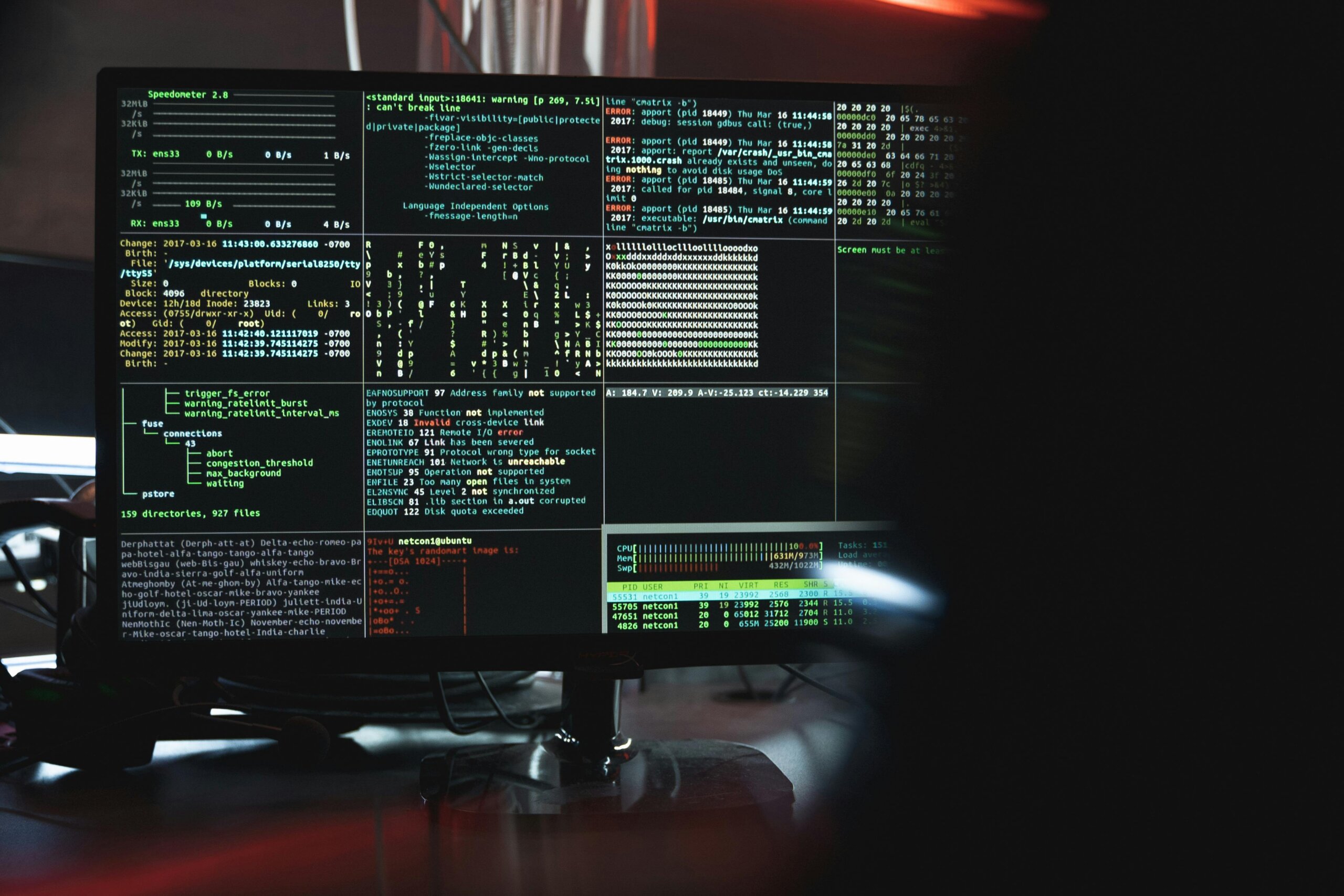
Maureen Brooks
Freelance Writer
17.11.2025
Managing IT services can feel like juggling too many tasks at once. Designers, in particular, often face slow systems, repetitive tech issues, and the constant worry of cyber threats. These problems waste time and energy that could go toward creativity.
Artificial intelligence offers a smarter way to handle these challenges. AI can automate routine tasks, predict system failures before they happen, and even strengthen security against evolving online risks. This blog will show you how AI simplifies IT for designers while increasing efficiency and safety. Ready to make work life easier? Keep reading!
The Role of AI in Managed IT Services
AI simplifies how businesses handle IT operations. It takes over repetitive tasks and keeps systems running smoothly.
Automation of Routine IT Tasks
AI handles time-consuming tasks like software updates and system backups. It reduces errors by automating repetitive processes, such as password resets or data entry. IT teams save hours with automation, allowing them to focus on urgent issues. For example, AI can monitor networks 24/7 and flag potential problems instantly—a capability many businesses explore when they check canteytech.com for IT support solutions.
Predictive Maintenance for System Reliability
Predictive maintenance uses AI-powered data analysis to monitor systems and predict potential failures. By identifying patterns in real-time, businesses can address issues before they interrupt operations. Machine learning tools analyze data like hardware performance, usage rates, and temperature fluctuations to identify risks early. “Prevention is always cheaper than repair.”
This approach not only reduces downtime but also decreases operational costs by avoiding emergency fixes. For example, IT teams can replace aging components instead of dealing with sudden breakdowns during peak hours. Designers working with experienced providers like The 7tech team benefit from proactive monitoring and quick responses that keep their creative workflows uninterrupted.
Enhancing Efficiency with AI
AI helps teams finish tasks faster by cutting out repetitive work. It also identifies patterns that save time and resources during critical projects.
Optimizing Resource Allocation
Smart algorithms can allocate resources based on demand. For instance, they analyze data trends to predict when designers need additional cloud storage or processing power. This prevents straining systems and spending funds on unused capacity. Machine learning tools also rank tasks by urgency and importance. They guide IT teams to concentrate on significant issues first while automating minor fixes. Such adjustments save time for critical projects, leading smoothly into improving UX design workflows.
Streamlining UX Design Workflows
AI tools simplify UX design workflows by automating repetitive tasks like wireframe creation and prototype adjustments. Designers save hours, allowing them to focus on creativity and problem-solving instead of manual edits or time-consuming revisions. Real-time analysis through AI provides data insights into user behavior, improving decision-making during the design process. Predictive analytics helps identify potential issues before they arise, resulting in a more efficient development cycle and better overall user experience.
Strengthening Security with AI
AI scans for unusual patterns and flags threats faster than humans can blink. It acts as a digital watchdog, sniffing out risks 24/7.
AI-Powered Threat Detection and Response
AI monitors activities across IT systems in real time. It detects unusual patterns and alerts to potential cyber threats instantly. Machine learning algorithms adjust to new risks, addressing gaps before attackers can strike. Automated tools react faster than traditional methods. These systems separate affected areas, reducing exposure and damage. Businesses conserve resources while safeguarding sensitive data through precise detection and quick action.
Integrating AI-Based and Traditional Cybersecurity Measures
Combining AI with traditional cybersecurity tools enhances defenses against cyber threats. AI examines patterns, identifies irregularities, and forecasts risks swiftly. Meanwhile, standard measures like firewalls and manual audits offer additional layers of protection. Together, they protect sensitive data more efficiently. AI addresses potential threats more quickly than humans are able to. Traditional methods contribute by analyzing flagged issues for accuracy. This combination minimizes false alarms while ensuring systems remain secure at all times.
Best Practices for Integrating AI into Managed IT Services
Adopt AI solutions that fit your team’s needs and goals. Regularly review systems to catch gaps or inefficiencies early.
Addressing Challenges in AI Implementation
Integrating AI into managed IT services can improve efficiency, but challenges may arise during implementation. Addressing these issues early can save time and resources.
- Begin with clear goals to prevent confusion. Identify what you want AI to achieve, such as improving resource allocation or automating routine tasks.
- Provide proper training to your team before introducing the tools. Without adequate preparation, employees might struggle to adapt and underuse the new system.
- Overcome resistance from staff by emphasizing the benefits. Explain how AI reduces workload and enhances operational efficiency rather than replacing their roles.
- Invest in high-quality data for improved performance. Poor or incomplete data undermines predictive analytics and real-time analysis.
- Address compatibility issues within your existing infrastructure early on. Older systems may require updates or adjustments to support advanced AI software.
- Monitor costs carefully during development stages. Unforeseen expenses like hardware upgrades or cybersecurity measures could accumulate quickly without planning.
- Prioritize compliance with regulations like GDPR or CCPA to avoid penalties. Protecting user data fosters trust and minimizes legal risks.
- Regularly test algorithms for accuracy and fairness to prevent bias in results that could negatively affect decision-making processes or reputations.
- Collaborate closely with vendors for dependable support when troubleshooting technical glitches during the deployment of AI solutions.
- Plan for future growth as workloads increase over time, ensuring your infrastructure can manage rising demands efficiently without service interruptions.
Next, let’s examine securing systems using AI-driven solutions while integrating traditional cybersecurity measures effectively!
Ensuring Data Privacy and Compliance
Protecting data and staying compliant are critical for managed IT services. AI can help secure sensitive information while meeting regulatory standards.
- Use predictive analytics to monitor data access patterns and flag unusual activity. This helps prevent unauthorized access before it happens.
- Implement real-time analysis tools driven by machine learning to detect compliance risks quickly. These tools reduce the chances of costly violations.
- Train your team on privacy regulations like GDPR or CCPA alongside AI solutions. Well-informed staff can handle compliance issues more effectively.
- Apply AI-powered encryption methods to protect sensitive data during storage and transfer processes. These techniques lower the risks of breaches significantly.
- Set up automated auditing systems to track compliance continuously without human intervention. This ensures consistent reporting for legal and business purposes.
- Conduct routine security assessments using advanced AI algorithms to evaluate vulnerabilities in IT infrastructure. Addressing weaknesses early minimizes future problems.
- Analyze cloud computing platforms with AI to verify they meet required privacy and security standards.
- Incorporate user experience tools that protect client data without compromising design workflows for improved operational efficiency.
- Maintain transparent communication about how AI supports compliance efforts in service management agreements with businesses.
- Stay updated on evolving regulations by combining human expertise with AI research tools for insights into upcoming changes affecting IT operations.
Conclusion
AI in managed IT services reshapes how designers work. It eliminates delays, minimizes risks, and reinforces system defenses. By merging machine learning with reliable IT strategies, teams can concentrate on what they excel at: creating great designs. Adopting AI is not just smart; it’s essential for progress and security. Stay prepared by adopting this technological change today!




